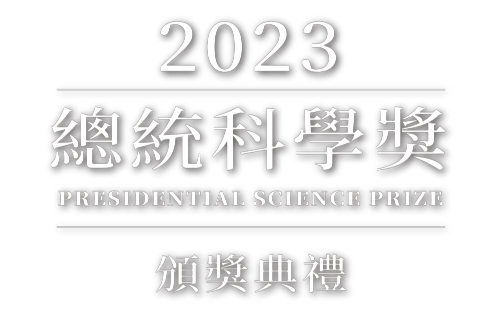2023 AWARDS
2023 AwardeesAcademician Wen-Hsiung Li
- Article Category: 2023 AWARDS
- Post Date: 2023/08/30
Life Sciences Category ─ Wen-Hsiung Li
50 Years in Exploring Biological Evolution using Mathematics
Developing Mathematical Methods to Solve Evolutionary Problems and Bring New Insights into Mechanisms of Evolution
Academician Wen-Hsiung Li is devoted to the study of molecular evolution. Molecular data such as DNA sequence and genomic structures and features are used in exploring the process and mechanism of biological evolution.
Molecular evolution consists of two major themes and Academician Li developed important computing tools for both. One of them is the process and mechanism of molecular evolution. The mathematical methods he developed in the 1980s and 1990s for DNA sequence comparison have been widely recognized and are among the most frequently used methods.
The other theme is the history of evolution and phylogenetic (evolutionary) relationships. In 1981, he thought of how to build the phylogenetic tree if molecular evolution does not happen at a constant speed. Therefore, taking non-constant rates in molecular evolution into consideration, he created a method to build a phylogenetic tree. Li 's approach was widely adopted in later studies; he can be said to be a pioneer in this topic.
There has been a well-known debate regarding the mechanism of evolution - which is more important? Natural selection or mutation? While the debate over "Darwinism and the hypothesis of neutral mutation" persisted, Academician Li and coauthors found in 1981 that once a gene loses its function and is dead, it is no longer subject to natural selection and nucleotide substitution is dramatically accelerated. The study showed that natural selection usually slows down, instead of expediting nucleotide substitution, supporting the hypothesis of neutral mutation. This hypothesis holds that mutation and random drift are more important than natural selection in molecular evolution.
More significantly, Academician Li’s team took the lead in discovering the inverse correlation between the molecular clock and the generation length and developing corresponding statistical analysis methods. A key hypothesis in explaining DNA data in the past was that DNA sequence changes at a constant rate in evolutionary time (that is, the molecular clock). The hypothesis was often applied to estimate lineage divergence time. In the 1980s, however, Academician Li showed that the molecular clock does not run at a constant rate but is inversely related to generation time. That is, the shorter the generation time, the faster the clock. For example, Academician Li’s team estimated that the clock evolves between rats and mice at a rate roughly five times that between monkeys and humans. This discovery rejected the prevailing view of a constant clock and contributed to a deeper understanding of the evolutionary process. The species divergence time can be more accurately estimated when a nonconstant clock is considered.
Academician Li applied his expertise in mathematics and statistics to make far-reaching predictions based on very limited molecular data. In 1991, for example, he predicted that the DNA diversity in humans is below 0.1% using very limited human DNA sequence data, which is considerably lower than that of fruit flies. Ten years later, abundant data proved that his prediction was correct. He also found that the DNA diversity of Africans was much higher than that of Europeans and Asians, which supported the view that modern humans originated from Africa, that is, the "Out of Africa" hypothesis.
Academician Li founded a molecular biology laboratory in 1989 to facilitate a combination of theory and experimentation. In 2001, when there were very limited genomic data in chimpanzees, Academician Li’s team obtained some data from chimpanzees and estimated that human and chimpanzee genomes diverged only 1.24% in terms of nucleotide substitution. This estimate was shocking because humans look very different from chimpanzees. When the chimpanzee genome was published in 2005, however, the answer was identical to his prediction.
Academician Li also combined theory and experimentation and found that germ cells of opposite genders of the same species mutate at different rates, with males having a faster rate than females. This is because male germ cells undergo many more rounds of DNA replication than female germ cells. Female eggs are formed prior to birth, while male sperm is constantly dividing throughout one’s life. As a result, male germ cells mutate faster. The Li lab found that this is true in both humans and rodents.
Li’s team has done significant research on the evolution of viruses, too. His team has found, for example, that a flu virus often needs to combine two or more mutations in order to evade the immune system of the host to trigger a flu outbreak. In addition, if the 82nd amino acid of ACE2 (angiotensin-converting enzyme 2) of the common ancestors of humans and old world monkeys had not mutated from threonine to methionine, the spike protein of SARS-CoV-2 would have a weak binding affinity to ACE2 in humans and humans would not be easily infected, so that the COVID-19 pandemic probably would not occur or would be milder.
For nitrogen, an essential key element to life, Academician Li’s team inferred that nitrogen fixation evolved in bacteria, rejecting the prevailing view that nitrogen fixation first evolved in archaea. It is another significant contribution to evolutionary research.
To sum up, the research accomplishments of Academician Li and his team has had a farreaching influence in the fields of molecular evolution and genetics. They not only facilitated the application of the molecular clock theory but also contributed to constant innovation in new research directions regarding issues such as human evolution and virus evolution, among others.









